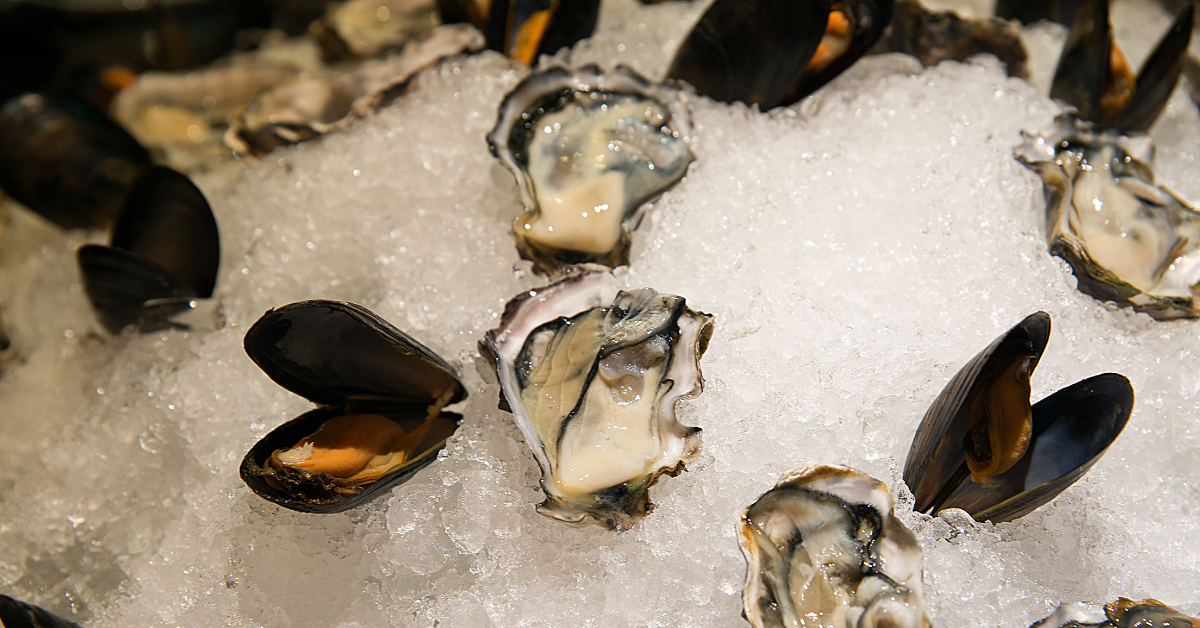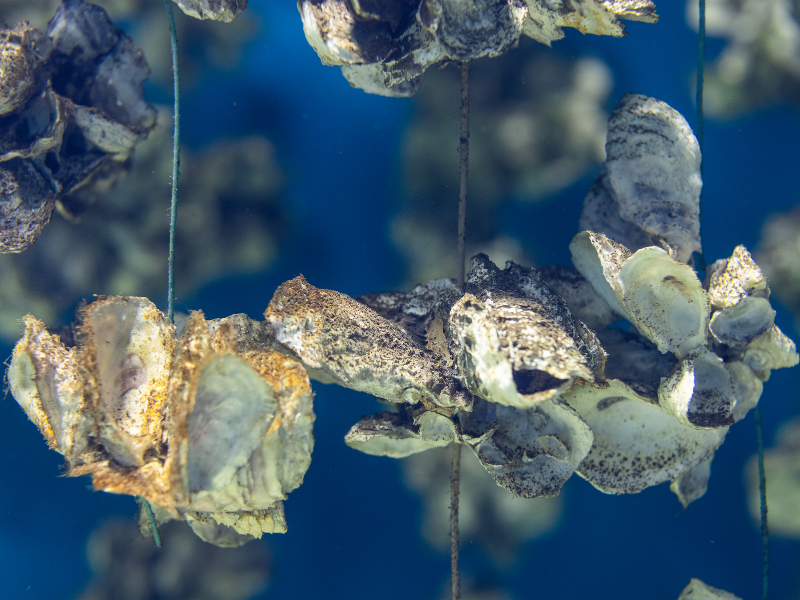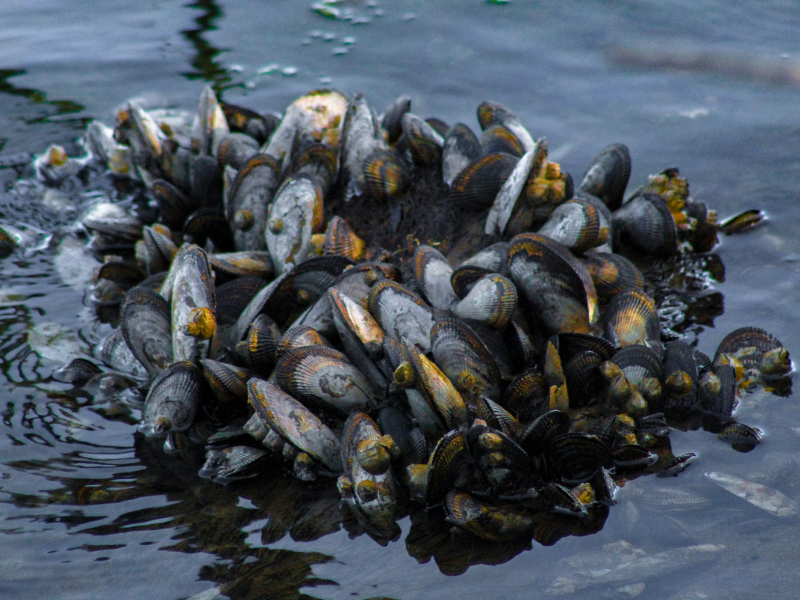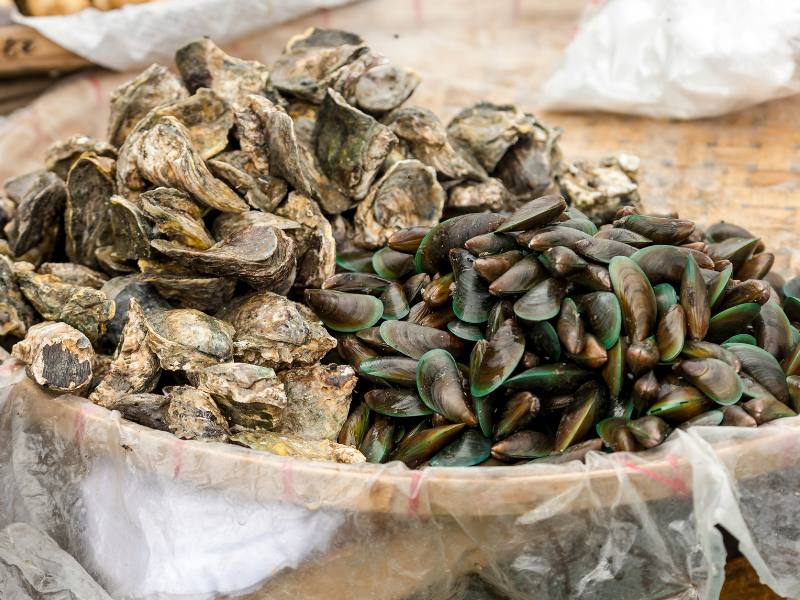
Oysters and mussels are two of the most popular mollusks found on seafood menus and in markets around the world.
Both pack a tasty punch, but they have some key differences that seafood lovers should understand.
In this post, we'll dive into everything you need to know to compare oysters vs. mussels.
Understanding Oysters and Mussels
To start, let's look at what defines these two bivalves and how they compare:
What are Oysters?

Oysters are saltwater mollusks with rough, irregular shells that are often found growing on reefs along coastal areas. Their shells are comprised of two hinged halves, known as valves. They start their lives as free-swimming larvae but eventually cement themselves to a surface, forming oyster beds that provide habitat and food for other marine life.
Oysters are edible bivalves that have a salty, briny flavor with mineral notes. They can be eaten raw or cooked. Popular ways to enjoy them are on the half shell, roasted, fried, or in stews.
What are Mussels?

Mussels are bivalve mollusks living in saltwater and freshwater, attached to surfaces by thread-like fibers. They have smooth, elongated, dark shells and a mild, sweet taste compared to oysters.
Mussels are a versatile ingredient that can be prepared in many ways, like steaming, baking, grilling, or adding to soups and pasta.
The Flavor Profile of Oysters and Mussels
When it comes to taste, oysters have a much stronger, brinier flavor that reflects the unique terroir of their growth location. Their taste ranges from sweet and mild to salty and mineral-rich. On the other hand, mussels tend to have a more delicate, subtly sweet flavor reminiscent of the ocean. Their meat is softer and more tender than oyster meat.
So, in terms of intensity of flavor, oysters pack a stronger punch, while mussels offer a more understated taste of the sea.
How Oysters and Mussels Reproduce
Oysters and mussels have unique reproductive strategies that allow them to thrive in their aquatic habitats.
Oysters begin as free-floating larvae, eventually settling to mature and prolifically spawn eggs fertilized externally in water, restarting their life cycle. In contrast, mussel larvae initially parasite fish for transport, later detaching to mature. Males release sperm for females to inhale and internally fertilize eggs, which are brooded in female gills until they become larvae.
Although both broadcast reproductive material into water, oysters externally fertilize while mussels internally fertilize, aiding the spread of populations.
How to Enjoy Oysters and Mussels
Oysters and mussels are delicious mollusks with different flavors and textures. Here are some serving suggestions to get the most enjoyment out of these nutritious seafood treats.
Serving Suggestions for Oysters
- Eat raw oysters on the half shell with lemon and hot sauce
- Bake or grill oysters with breadcrumbs, garlic, and parmesan
- Fry oysters and serve with tartar sauce or remoulade
- Stew oysters in a creamy soup or seafood gumbo
- Smoke oysters over a grill or wood chips
- Pickle-shucked oysters in a mignonette sauce
Serving Suggestions for Eating Mussels
- Steam mussels in wine or broth with garlic, shallots, and herbs
- Cook mussels into a tomato-based pasta or risotto
- Bake mussels on the half shell topped with breadcrumbs
- Grill mussels in a wire basket and serve with aioli
- Put mussels on skewers for easy grilling
- Pickle mussel meat for an appetizer or salad topping
With so many cooking methods, it's easy to enjoy the unique flavors of oysters and mussels. Be adventurous and try them in new ways!
Frequently Asked Questions about Oysters and Mussels
How are oysters and mussels different?
Oysters have thicker, irregular shells compared to the thinner, smoother shells of mussels. Oysters also tend to have a more elongated, asymmetric shape, while mussels are more rounded. Oysters generally have a stronger, brinier flavor, while mussels tend to taste milder and sweeter. Oysters only live in saltwater habitats, while mussels can thrive in both freshwater and saltwater environments.
Which is healthier, oysters or mussels?
Both oysters and mussels are highly nutritious shellfish with some key nutritional differences. Mussels contain higher amounts of vitamin B12, manganese, and selenium, which provide benefits for energy, immune function, and metabolism. Oysters excel in providing immunity-boosting zinc, iron for healthy blood, and anti-inflammatory omega-3 fatty acids.
Ultimately, both oysters and mussels pack a nutritious punch. Enjoying both regularly as part of a healthy, balanced diet can provide an excellent nutrient profile.
How do the flavors of oysters and mussels compare?
When cooking Oysters, look forward to experiencing a bold, briny flavor that reflects their specific regional merroir, ranging from intensely salty to mildly sweet. Mussels have a milder, more subtly sweet ocean taste with soft, buttery meat. Oysters provide very distinct, complex tastes showcasing where they came from, while mussels offer a more general light, sweet flavor. It comes down to personal taste preferences when deciding between these two delicious bivalve mollusks.
Final Thoughts on Oysters and Mussels

Oysters and mussels are both highly nutritious, tasty mollusks that make excellent additions to a healthy diet. They share some common traits but have key differences when it comes to flavor profiles, textures, shells, habitats, and nutritional content.
When choosing between these nutritious bivalves, consider your own tastes, nutritional needs, and how you plan to enjoy them. Eat oysters or mussels depending on your preferences. Both deliver delicious flavors and great health benefits!
← Older post Newer post →
